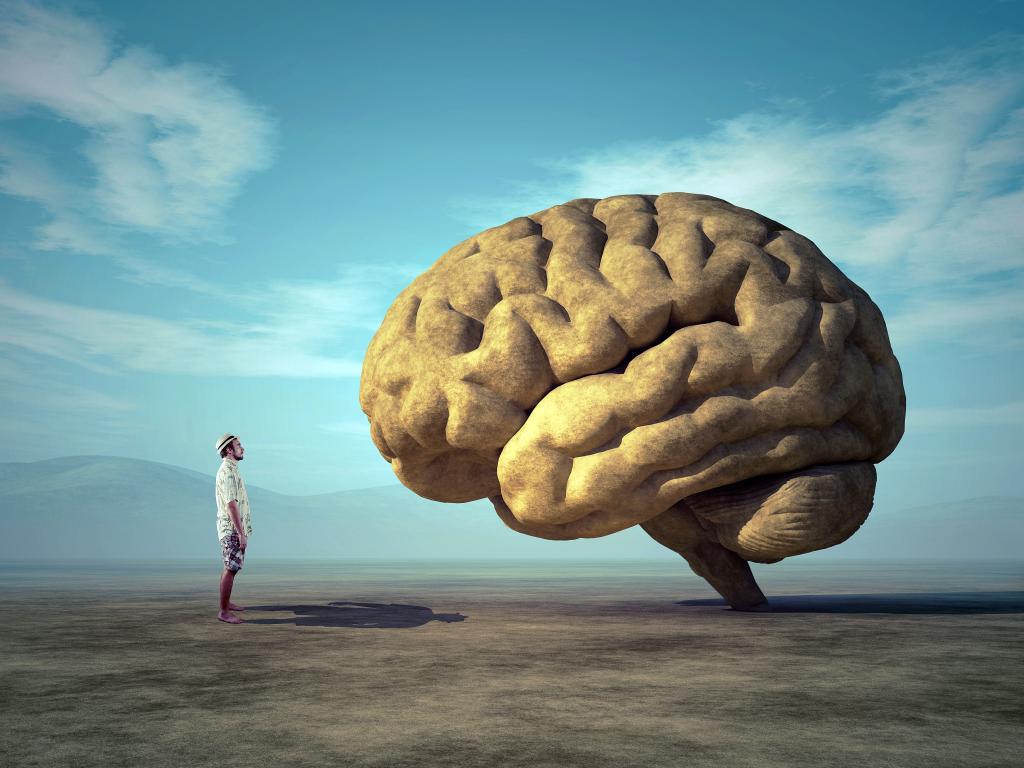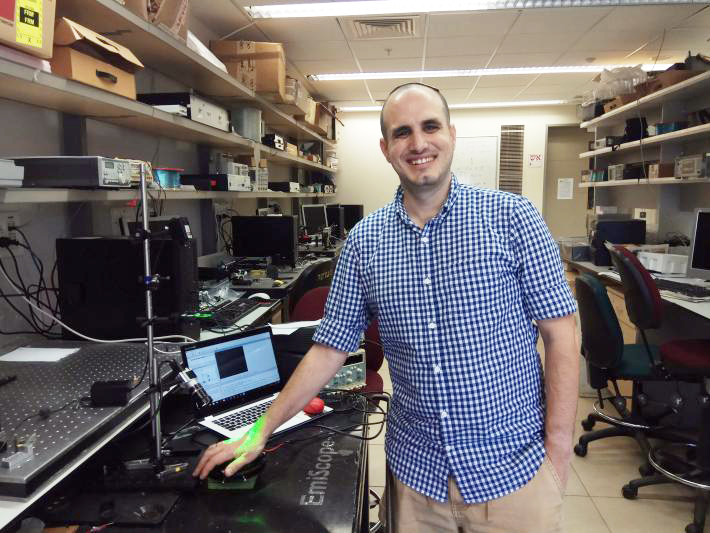Studying the brain in real environment

Meet Dr. Nisan Ozana, our new faculty member who specializes in neurophotonics: a combination of electro-optics and neuroscience for clinical and functional purposes
There has been a rise in the field of physiological measuring of the human brain, using optical and acoustic methods in recent years. “The key advantage of these methods is that they allow us to see and measure the brain in a real environment, by monitoring changes in Hemoglobin levels and blood flow in the cortex, without the use of CT or MRI scans,” explains Dr. Nisan Ozana. “One possible use for these methods is of course clinical—in hospitals, for example, for patients with neurological disorders, cerebral blood flow in preemies, monitoring cerebral blood flow during open heart surgeries or patients who are at risk of strokes or heart attack, and many other clinical uses. But this field is also becoming more popular in monitoring brain activity in social conditions: helping us to understand how we communicate and respond in a real environment.”
 Dr. Ozana (37) arrived in Israel in early August, straight to the halls of the Faculty of Engineering. He spent the last three years in Boston, at Harvard Medical School and Massachusetts General Hospital where he worked on his post-doctoral research, investigating optical methods for measuring cerebral blood flow changes in the brain. “We built a system that consists of ultra-high-sensitivity single photon superconductive quantum sensors, which we used to measure blood flow in the brain,” he elaborates. “One way to do that is by illuminating a laser beam at the skull and measuring the number of photons that entered the brain and returned—in other words, measuring the change in reflected light as a function of time and space after having interacted with the cortex. Today we have sensitive sensors and cameras which we can use to measure changes to blood flow by measuring the photons that have gone all the way to the cortex and back into the optical sensor.”
Dr. Ozana (37) arrived in Israel in early August, straight to the halls of the Faculty of Engineering. He spent the last three years in Boston, at Harvard Medical School and Massachusetts General Hospital where he worked on his post-doctoral research, investigating optical methods for measuring cerebral blood flow changes in the brain. “We built a system that consists of ultra-high-sensitivity single photon superconductive quantum sensors, which we used to measure blood flow in the brain,” he elaborates. “One way to do that is by illuminating a laser beam at the skull and measuring the number of photons that entered the brain and returned—in other words, measuring the change in reflected light as a function of time and space after having interacted with the cortex. Today we have sensitive sensors and cameras which we can use to measure changes to blood flow by measuring the photons that have gone all the way to the cortex and back into the optical sensor.”
Dr. Ozana also investigated ways to identify the effects of Δ9-tetrahydrocannabinol (THC, the primary psychoactive compound in cannabis) impairment on the brain, using non-invasive optical neuroimaging methods in a resting state. This was done through the connectivity between different areas of the brain and utilizing ML and RNN algorithms.
Now, Dr. Ozana is coming back to the Faculty of Engineering at Bar-Ilan, where he earned his undergraduate and graduate degrees. The lab he is now establishing will focus on neurophotonics, a combination of electro-optics and neuroscience for clinical and functional purposes, associated with the neuroengineering track. “Part of the research in the lab is applicable, in collaboration with hospitals and research labs in Israel and abroad. Another part will focus on developing hardware and new systems in order to improve the sensitivity and monitor new phenomena that we have not yet been able to monitor. I’m looking for creative, ambitious students to work in optics, hardware, and algorithmics.”
Send your CV to ozanan@biu.ac.il
Last Updated Date : 28/08/2022



